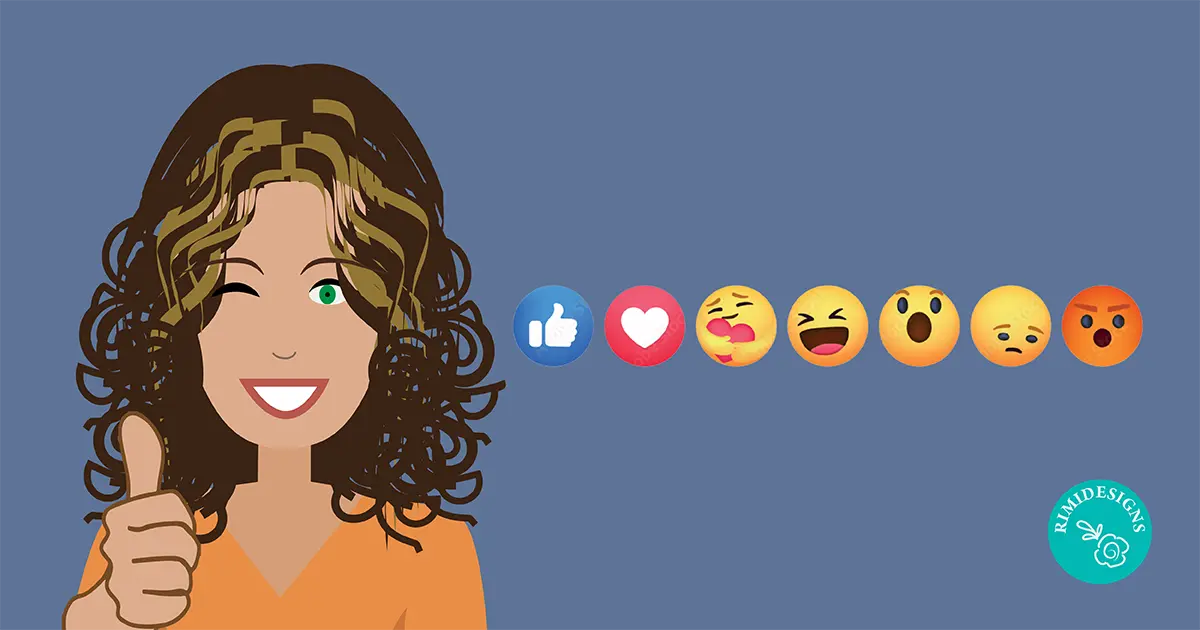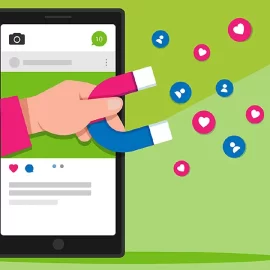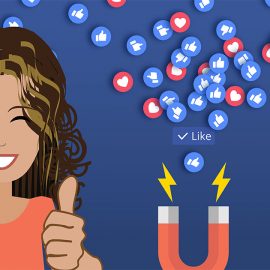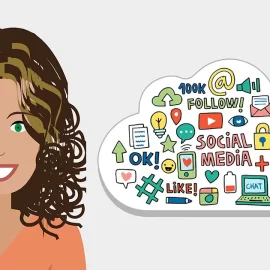
How to Use Facebook Reactions for Emotional Content Ideas
Facebook Reactions allows users to do more than just “like” the posts that show up on their feeds. They can choose to share more specific reactions, like “love”, “care”, “haha”, “wow”, “sad” and “angry”.
For businesses using Facebook, this feature can be a valuable tool. For example, you can look at these Facebook reactions to gauge how customers really feel about your posts. You can then tailor your Facebook content strategy accordingly.
Below is an overview of these Facebook reactions and how each might provide insights to help boost your brand.
Love reaction
The “love” Facebook reaction is like a stronger version of the traditional “like”. If you create a post that gets a lot of hearts, especially if it also gets a lot of shares and other interactions from your followers, that’s a good sign.
Heart-warming videos or photos of your most popular products or greatest customer service moments might be the kinds of content your audience will “love”.
Gauge news and other content to see what material is getting this reaction from your audience. Then try to share more similar content in your news feed. When you can get followers and potential customers to react this strongly to something in such a positive way, you’re on the right track.
Care reaction
The “care” Facebook reaction signifies a deeper level of empathy, sympathy or concern towards the content shared. When your posts receive numerous “care” reactions, alongside shares and comments, it indicates a deep resonance with your audience.
Posts evoking emotions of compassion, support or understanding could include heartfelt stories, charitable initiatives or messages of solidarity during challenging times. Such content demonstrates authenticity and promotes a genuine connection with your audience.
Look out for posts that evokes the “care” response and tailor your content strategy to include more of these elements to help grow a community that values compassion and empathy.
Encouraging “care” reactions signifies that your content is touching hearts and resonating on a deeper level. It indicates that your brand is not only being noticed but also making a meaningful impact on your audience’s lives.
Haha reaction
The happy, laughing face in the Facebook reactions is reserved for posts that make people laugh. Humour can be a useful tool when creating content for your audience, depending on your brand. Post funny videos, comments or jokes, especially if they are relevant to your market or to a problem you help customers solve.
You can use the “haha” Facebook Reaction as a gauge to determine how funny people think your posts really are. Of course, avoid posts your audience might find offensive or inappropriate for your brand. But remember things that make people laugh usually also make them happy.
This is a positive reaction a lot of businesses should generally aim for when creating content for their following.
Wow reaction
The “wow” Facebook reaction, appearing as a little face that seems to be showing shock or surprise, is meant for content creating a similar reaction. Things that are out of the ordinary tend to get people talking quite a bit. So when your content receives lots of “wow” reactions, its probably getting more discussion, shares and page views too.
Post surprising features about your product or service or surprising facts about your industry or about the problems you help customers solve. Experiment to learn what kind of content gets the “wow” reaction from your audience. This is the content you’ll want to create, especially when building excitement or buzz around a big launch.
But don’t go overboard. Overdoing these kinds of posts will diminish their impact on your audience in the long run. This could make it difficult to generate the same levels of excitement in the future.
Sad reaction
The “sad” Facebook reaction, appearing as a sad face with a tear drop, can also be a helpful indicator of how customers feel about your content. While most businesses shouldn’t get in the habit of making customers feel sad, content generating this kind of emotional response certainly has its place.
For instance, you might share a sad video in order to get people to care about a certain issue or to donate or purchase to benefit a cause. In this case, look for “sad” Facebook reactions to determine whether your content is having the desired affect. And if that content tugs at people’s heart strings in a way that spurs them to action, take note.
As in other cases, however, be careful not to overdo it. You’ll end up with an audience that is too emotionally drained to take action or too “bummed out” by your brand, in general.
Angry reaction
Again, your goal as a business probably shouldn’t be to make your customers angry. However, anger can translate into action.
Don’t discount a piece of content that generates controversy or anger about a certain issue. It could translate to greater visibility and eventually more interest in what you do.
Depending upon your brand, you may want to identify the kind of content that really gets your audience fired up. “Angry” Facebook reactions, appearing in the form of an angry face that seems to be turning red, are a good indicator.
Again, you’ll want to be careful not to post this kind of content all the time. But the occasional video or comment about a real pain point you can help your customers overcome or a controversy in your industry could raise awareness and start important discussions.
Like reaction
Of course, there’s still the classic “like” Facebook reaction. Followers tend to still give posts the famous thumbs up when they simply don’t have another strong emotional reaction. And that’s OK. While all of the other emotional Facebook reactions can bring you more specific insights about your customers and how they feel, the classic “like” button still has its place.
Conclusion
It’s unlikely that absolutely everything you post will surprise people, make them laugh or make them angry. Mostly you’ll just share content that is helpful or interesting. If your audience gives these posts a consistent “like”, you can’t really hope for more.
SOURCE: Small Business Trends



